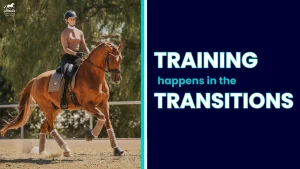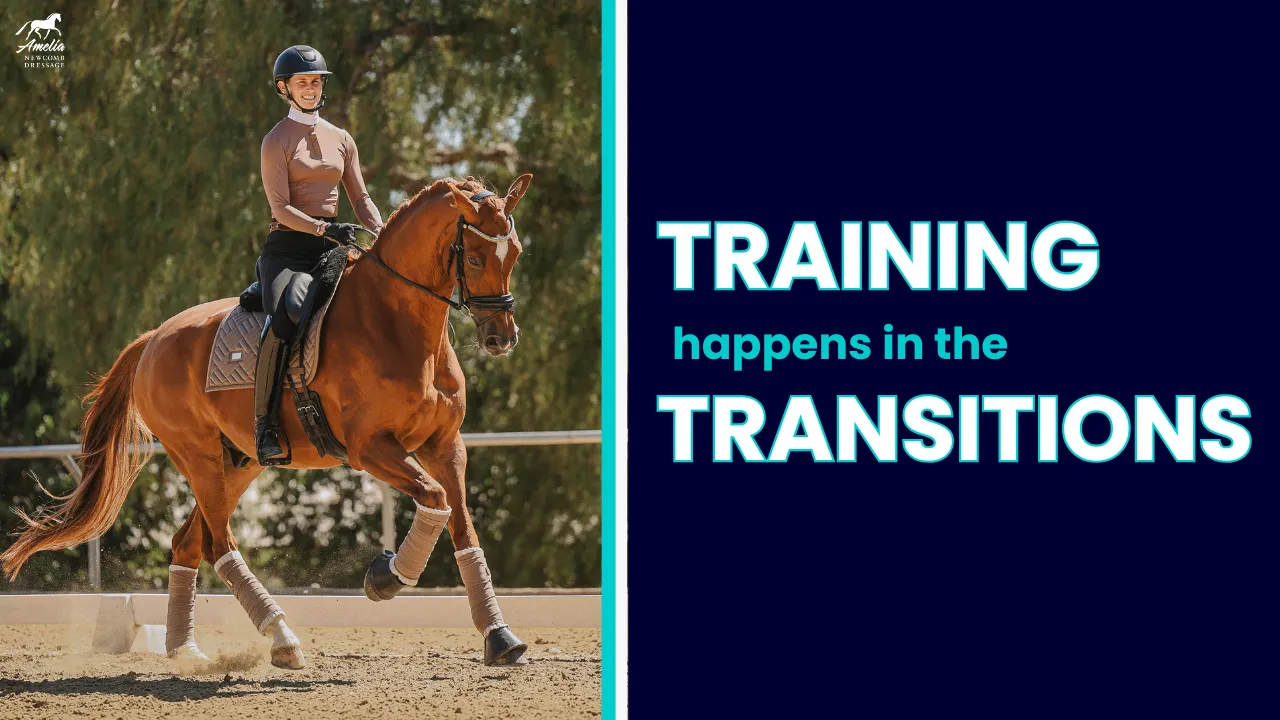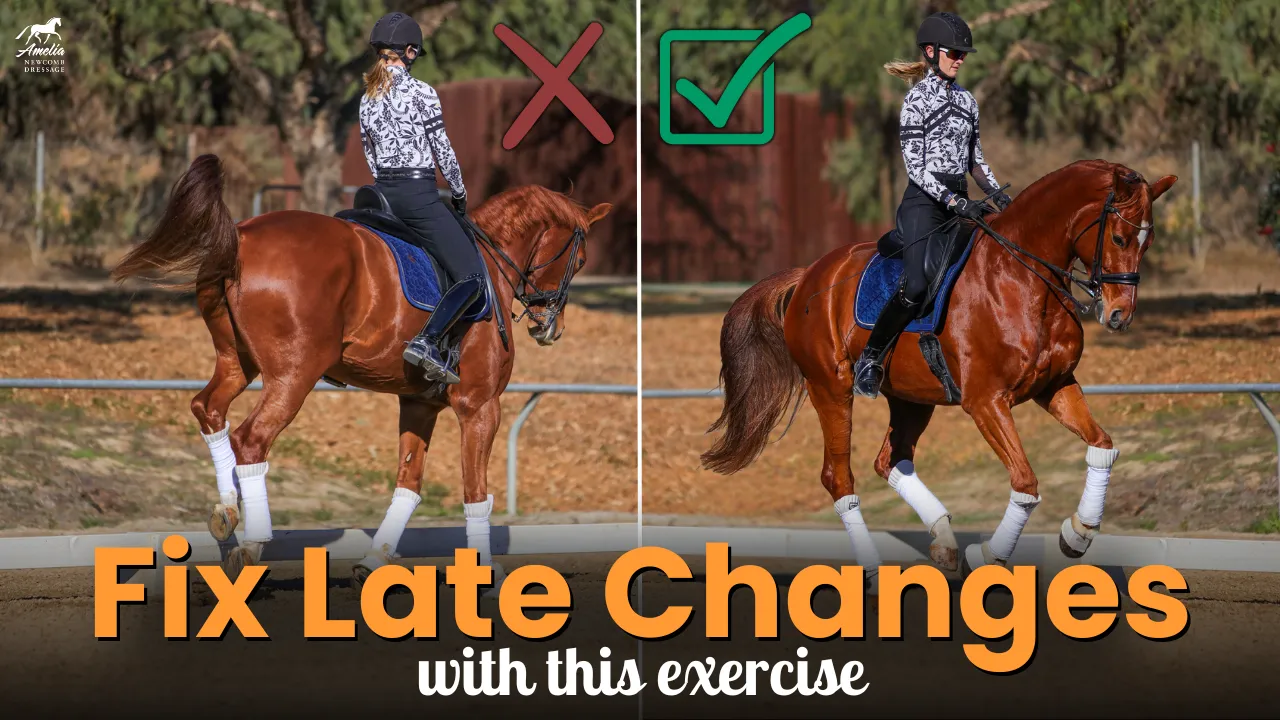There’s something really magical about flying changes, don’t you think? It’s one of those moves that even people who know nothing about dressage are really impressed by. It’s when dressage starts to look like dancing. So, of course, we ALL want to eventually learn how to do them, right!?
In this week’s video, I’m aboard Natasha: the Grand Prix Change Queen, to take you guys through the details of executing a flying change.
Firstly, as with the counter canter last week, the first thing that needs to be in place and practically unshakeable is the quality of your canter. It needs to be
- Active
- Uphill
- Rhythmic
- And have lots of impulsion (the moment of suspension when all four feet are off the ground)
The second pre-requisite for the flying changes are Canter-walk-canter transitions.
In the walk-canter transition your horse must:
- go directly into canter with no trot steps
- have a really active/engaged hind leg on the first stride,
- be very responsive to a light canter aid and
- stay nice and round in the neck and body.
It is also very important to note that in the canter, you need to keep your legs in the canter aid position for the lead you’re on – all the time! When you are in left lead, for example, your right leg should always be slightly behind the girth unless you want a flying change!
The steps for a flying change going left to right are
- Canter left
- The right leg is back from having given the aid for left canter.
- Then supple your horse with the right rein and move your horse off the right leg
- Simultaneously bring the left leg back and the right leg forward to get the change.
Some points that are important to note before you attempt your changes.
- If you are changing left to right, you will keep your legs in the position for left canter, but with your rein, you will begin to ask for right bend, while maintaining the left lead canter.
- When you bring the right leg forward to ask for the change, you also GIVE with the right rein to allow the inside hind leg to come through.
This does seem confusing, but I demonstrate in slow-mo on the video. Also, whoever you or your horse get flustered or confused, go back to the canter walk canter transitions so you can practice the setup with your legs/reins.
Let me know in the comments if you have any questions!
Thanks for watching and happy riding!












































